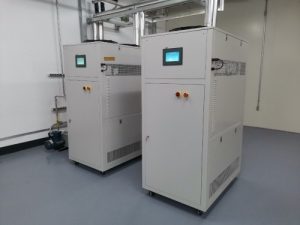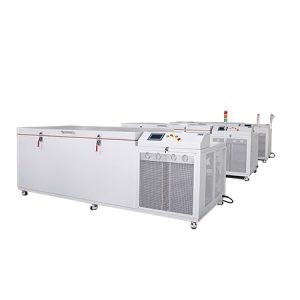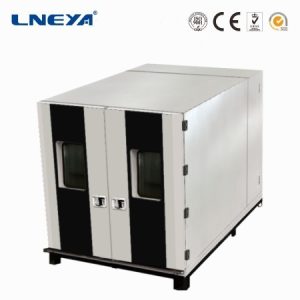Why do chip testing processes require chillers and heaters?
The chip high and low temperature testing process requires chillers and heaters, mainly to simulate and test the performance and reliability of the chip under different temperature conditions to ensure that it can work stably in actual applications.
The specific reasons are as follows:
Temperature Control Accuracy: Chillers and heaters can provide precise temperature control to keep the temperature of the test environment near the set value, which is crucial for evaluating the function of the chip under extreme temperatures. The high accuracy of temperature control helps to discover potential problems of the chip at different temperatures, such as performance degradation, functional failure, or material aging.
Temperature Cycle Test: In the high and low temperature cycle test, the chiller and heater work alternately to make the chip experience fast or slow temperature changes, simulating the temperature fluctuations that the chip may encounter in the real environment. This test can detect the thermal stability, thermal shock tolerance, and fatigue failure characteristics of the chip.
Simulate actual Working Conditions: Chips may face extreme temperature environments in various applications, such as in automotive electronics, aerospace, and outdoor communication equipment. Chillers and heaters can simulate a temperature range from extremely low to extremely high to ensure that the performance of the chip meets the design requirements in all expected working environments.
Accelerated Aging Test: Through the precise control of heaters and chillers, the chip can be subjected to accelerated aging test, that is, the aging condition of the chip after long-term operation can be simulated in a short time to evaluate its long-term reliability.
Verify Thermal Design: In the chip design stage, chillers and heaters can help verify the effectiveness of thermal management solutions, ensure that the chip packaging and heat dissipation design can effectively control the temperature during operation, and avoid performance degradation or damage caused by overheating.
Improve Test Efficiency: The fast-response heating and cooling system can greatly shorten the test cycle and improve test efficiency, especially when the test temperature needs to be changed frequently.
In summary, the application of chillers and heaters in high and low temperature testing of chips is a key tool to ensure chip quality and evaluate its performance and reliability under various temperature conditions. Through precise temperature control, chip design can be effectively detected and improved to ensure its normal operation in harsh environments.
Temperture accuracy
±0.1℃
Flow control
15~45/min 6bar max
Temperture accuracy
±0.1℃
Flow control
25~75/min 6bar max
Temperature control in semiconductor production and testing processesEnsure stable and reliable overall semiconductor process flow from front-end to back-endProduct’s Descriptionchillers that control the processing temperature on the Fab equipment…
Temperature control in semiconductor production and testing processesEnsure stable and reliable overall semiconductor process flow from front-end to back-endProduct’s DescriptionApplication scenarios of temperature control in semiconductor process…
(Scan the QR code for online help)
 Industrial Chiller Heater Equipment Supplier-LNEYA
Industrial Chiller Heater Equipment Supplier-LNEYA









